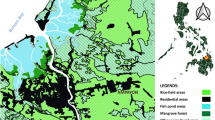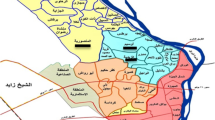Abstract
Snails are good source of protein and one of the delicacies in majority of the areas in the Philippines. However, they may act as an intermediate host for several parasites such as Angiostrongylus cantonensis. This parasite is commonly found in South East Asia especially in agricultural countries like the Philippines. Hence, the present study aims to determine the prevalence of A. cantonensis in their intermediate host in Village Bagong Sikat, which is situated at the rice granary of the Philippines. A total of 947 snails were randomly collected within 50 m × 50 m transect line through handpicked method. The third larvae (L3) stage from the snails was recovered through artificial tissue digestion. Results showed that 173 out of 947 snails (18.27%) were found positive with A. cantonensis L3 larvae. Three species of snails were recovered having Melanoides tuberculata to have the highest prevalence of A. cantonensis (21.54%) followed by Pomacea canaliculata (17.75%) and Vivipara angularis (17.74%). Statistical analysis further showed that prevalence of A. cantonensis and the length of snails has no significant difference (p > 0.05). The species of snails collected and found infected in the present study are considered part of the delicacies of the locals in Nueva Ecija. Thus, these results highlight the need to raise awareness of the locals regarding the zoonotic potential of A. cantonensis, which are of public health importance.




Similar content being viewed by others
References
Brito F, Joshi R (2016) The golden apple snail Pomacea canaliculata: a review on invasion, dispersion and control. Research Information LTD, Burnham
Castillo DS, Paller V (2018) Occurrence of Angiostrongylus cantonensis in rodents from the rice granary of the philippines and associated risk factors for zoonotic transmission. J Parasit Dis. https://doi.org/10.1007/s12639-018-1005-z
Cowie RH (2013) Pathways for transmission of angiostrongyliasis and the risk of disease associated with them. Hawai’i J Med Public Health 72(6 Supplement 2):70–74
Dalton M, Fenton H, Cleveland C, Elsmo E, Yabsley M (2017) Eosinophilic meningoencephalitis associated with rat lungworm (Angiostrongylus cantonensis) migration in two nine-banded armadillos (Dasypus novemcinctus) and an opossum (Didelphis virginiana) in the southeastern United States. Int J Parasitol Parasites Wildl. https://doi.org/10.1016/j.ijppaw.2017.05.004
Dard C, Piloquet JE, Qvarnstrom Y, Fox L, Mkada H, Hebert JC, Mattera D, Harrois D (2017) First evidence of Angiostrongyliasis caused by Angiostrongylus cantonensis in Guadeloupe, Lesser Antilles. Am Soc Trop Med Hyg 96(3):692–697
Dias S, Lima W (2011) Effect of temperature on activity of third-stage larvae of Angiostrongylus vasorum. Parasitol Res. https://doi.org/10.1007/s00436-011-2624-9
Gederen P (2010) Antihenlminthic drugs. Side effects of drugs annual
Graham A (2003) Effects of snail size and age on the prevalence and intensity of avian schistosome infection: relating laboratory to field studies. J Parasitol 89(3):458–463
Hamalainen E, Jarvinenen S (2012) Snails: biology, ecology and conservation. Animal science, issues and prefessions. Nova Science Publisher, New York
Ibrahim M (2007) Prevalence and intensity of angiostrongylus cantonensis in freshwater snails in relation to some ecological and biological factors. Parasite 14:61–70. https://doi.org/10.1051/parasite/200714106
Igbinosa B, Isaac C, Adamui O, Adeleke G (2016) Parasites of edible land snails in Edo State, Nigeria. Helminthologia 53:331–335. https://doi.org/10.1515/helmin-2016-0031
Kramer K, Posner J, Gosnell W (2018) The role of gastropod mucus in the transmission of Angiostrongylus cantonensis, a potentially serious neurological infection. ACS Chem Neurosci. https://doi.org/10.1021/acschemneuro.7b00491
Luessi F, Sollors J, Torzewski M, Muller H, Siegel E, Blum J, Sommer C, Vogt T, Thomke F (2009) Eosinophilic Meningitis due to Angiostrongylus cantonensis in Germany. International Society of Travel Medicine, 1195-1982. J Travel Med 16(4):292–294
Lv S, Zhang Y, Liu H, Hu L, Yang K, Steinmann P, Chen Z, Wang L, Utzinger J, Zhou X (2009) Invasive snails and an emerging infectious disease: results from the first national survey on Angiostrongylus cantonensis in China. www.plosntds.org
Martin GL, Cabrera EC (2018) Morphological characterization of emerging cercariae among lymnaeid snails from Baranggay Cawongan, Padre Garcia, Batangas, Philippines. J Parasitol Res. https://doi.org/10.1155/2018/5241217
Minchella D (1985) Host life-history variation in response to parasitism. Parasitology. https://doi.org/10.1017/S0031182000049143
Mozzer LR, Coaglio A, Dracz R, Ribeiro V, Lima W (2014) The development of Angiostrongylus vasorum (Baillet, 1866) in the freshwater snail Pomacea canaliculata (Lamarck, 1822). J Helminthol 89:755–759. https://doi.org/10.1017/s0022149x14000856
Nguyen Y, Rossi B, Argy N, Baker C, Nickel B, Marti H, Zarrouk V, Houzé S, Fantin B, Lefort A (2017) Autochthonous case of eosinophilic meningitis caused by Angiostrongylus cantonensis, France, 2016. Emerg Infect Dis 23(6):1045–1046
Oliveira A, Gentile R, Maldonado A Jr, Torres EJL, Thiengo SC (2015) Angiostrongylus cantonensis infection in Molluscs in the Municipality of São Gonçalo, a Metropolitan Area of Rio de Janeiro, Brazil: role of the invasive species Achatina fulica in parasite transmission dynamics. Mem Inst Oswaldo Cruz 110(6):739–744. https://doi.org/10.1590/0074-02760150106
Pien F, Pien B (1999) Angiostrongylus cantonensis: Eosinophilic Meningitis. Straub Clinic and Hospital, University of Hawaii John A. Burns School of Medicine, Honolulu
Raw J, Perissinotto R, Miranda N, Peer N (2016) Feeding Dynamics of Melanoides tuberculata (Muller, 1774). J Molluscan Stud. https://doi.org/10.1093/mollus/eyv070
Schug K, Kramer F, Scaper R, Hirzmann J, Failing K, Hermosilla C, Taubert A (2018) Prevalence Survey on Lungworm Angiostrongylus vasorum, Crenosoma vulpis, Eucoleus aerophilus) Infections of Wild Red Foxes (Vulpes vulpes) in Central Germany. Parasites and Vectors 11:85
Simoes R, Monte T, Boia M (2016) Junior A. Encephalitis caused by Helminths. Laboratorio de Biologia e Parasitologia de Mamiferos Silvestres Reservatorios, Fundacao Oswaldo Cruz, Brazil. SMGroup
Stockdale-Walden H, Slapcinsky J, Qvarnstrom Y, McIntosh A, Bishop H, Rosseland B (2015) Angiostrongylus cantonensis in introduced gastropods in Southern Florida. J Parasitol 101(2):156–159
Tujan MA, Fontanilla IA, Paller VG (2016) Vectors and spatial pattern of Angiostrongylus cantonensis in selected rice-farming villages of Muñoz, Nueva Ecija, Philippines. J Parasitol Res 2016:3085639
Tunholi-Alves V, Tunholi V, Pinheiro J, Thiengo S (2012) Effects of infection by larvae of Angiostrongulus cantonensis (Nematoda, Metastongylidae) on the metabolism of the experimental intermediate host Biomphalaria glabrata. Exp Parasitol 131:143–147
Acknowledgements
We would like to express our deepest appreciation and gratitude to the locals of Village Bagong Sikat, Munoz, Nueva Ecija, who have the great participation for the success of our study and CLSU-Environmental Science students, faculty and laboratory assistants, who helped, guide and provided us facilities and equipment.
Author information
Authors and Affiliations
Contributions
Conceived and designed the experiments: JRC, CJTQ, DSCC, KOP; Performed the experiment, data analysis: JRC, CJTQ; all authors participated in writing the final paper.
Corresponding author
Ethics declarations
Conflict of interest
None declared.
Additional information
Publisher's Note
Springer Nature remains neutral with regard to jurisdictional claims in published maps and institutional affiliations.
Rights and permissions
About this article
Cite this article
Cawas, J.R., Quisao, C.J.T., Castillo, D.S.C. et al. Prevalence of Angiostrongylus cantonensis among different species of snails in the village of Bagong Sikat Muñoz, Nueva Ecija, Philippines and its associated risk factors for zoonotic transmission. J Parasit Dis 44, 388–394 (2020). https://doi.org/10.1007/s12639-020-01200-0
Received:
Accepted:
Published:
Issue Date:
DOI: https://doi.org/10.1007/s12639-020-01200-0




